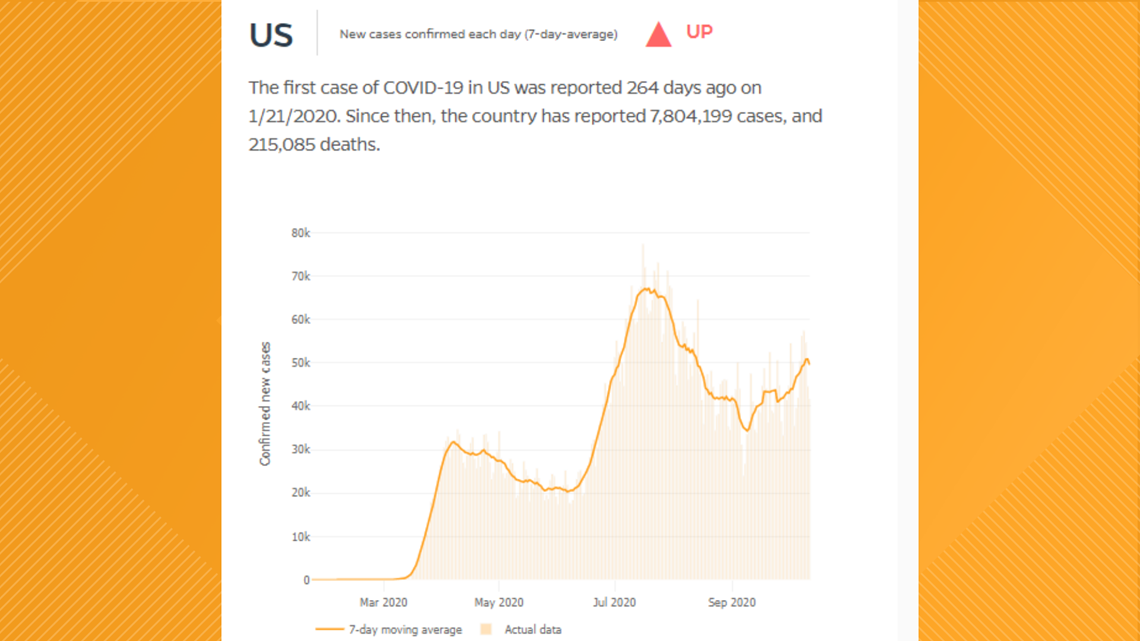WASHINGTON — The Verify team exists to separate fact from fiction in an age of widespread misinformation. And with cases in the DMV region once again on the rise, including a 20% rise in COVID-19 hospitalizations in Maryland, the possibility of a second wave of coronavirus is circulating on social media.
Viewers reached out and asked us to verify "what counts as a second wave?" So let's VERIFY:
QUESTION:
Is there a definition or measurement for what qualifies as a second wave?
ANSWER:
No, it's more accurate to refer to most spikes as "peaks."
SOURCES:
The World Health Organization
Dr. Amesh Adalja, Senior Scholar at the Johns Hopkins University Center for Health Security
Dr. Linda Nabha, Infectious Diseases Specialist
PROCESS:
For months we've heard about a possible "second wave" of COVID-19, and cases across the DMV have seen a recent increase.
Maryland is averaging 22% more coronavirus case a day than it was at the end of September. D.C.’s coronavirus trend has increased sharply over the past week – up 84% since dropping to its lowest levels since July at the beginning of this month. Virginia’s average case rate has increased by 34% since October 1 and the commonwealth recorded its second-highest single day case count since the pandemic began on Oct. 8.
WUSA9 reached out directly to the World Health Organization to see if they have a specific definition of how many cases we'd need to see to state that there's been a second wave.
"There is no scientific definition of a 'second wave' nor a specific threshold of cases, rates," the WHO said in an email. "It's about [the] resurgence of cases."
Dr. Amesh Adalja and Dr. Linda Nabha both agreed.
"In order to say one wave is ended, the virus has to be brought under control and cases have to fall substantially," Nabha said. "Then for a second wave to start, you need a sustained rise in infections."
Doctor Adalja said it's more accurate to refer to most spikes as "peaks."
"One of the things that's characteristic about a wave is that it has a peak, and it has a trough," Adalja said. "When you look at countries like the United States, we really never had a trough. We're still having tens of thousands of cases every day."


This graphic from Johns Hopkins University shows the peaks and valleys of the case numbers in the U.S., and the lack of a "trough" as doctor Adalja described.
So we can Verify, there's no scientific definition of a "second wave" of a virus. But our experts say we will likely see another peak again, as we go into the fall and winter months.
"What we need to think about is the fact that we're going to have these kind of undulations, this intensification that occurs when there are mass gatherings when people's behavior changes, and especially when it gets colder, and people can do less activities outdoors," Adalja said.

